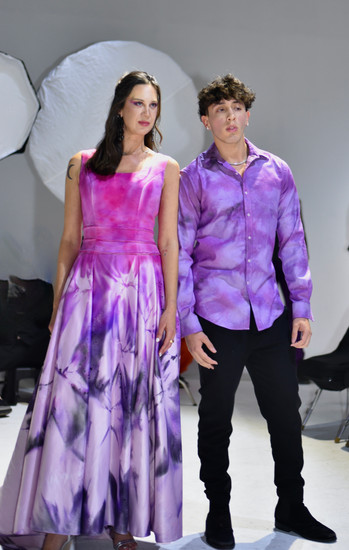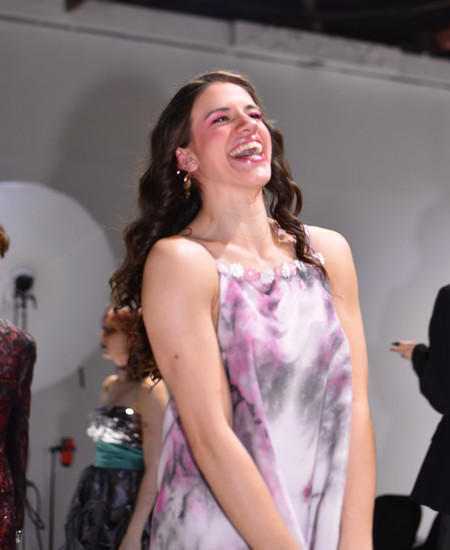The Wedding Dress Revolution: Upcycling for a Sustainable Future
- Boulder Babe

- Feb 25
- 4 min read
Updated: Mar 1
For many brides, the wedding gown is the heart of their dream day—a symbol of love, beauty, and celebration. But beneath the elegance of traditional bridal fashion lies an industry plagued by overproduction, environmental waste, and unethical labor practices. At Boulder Babe, we are redefining wedding fashion with the Wedding Dress Upcycle Collection—a bold and sustainable approach that breathes new life into once-worn gowns.
The Dark Side of the Wedding Industry

The modern wedding dress industry is a significant contributor to textile waste. Most wedding gowns are worn once before being stored away for decades or, worse, discarded. Fast fashion has infiltrated the bridal world, pushing an unsustainable cycle of mass production, high markups, and exploitative labor practices. Major retailers like David’s Bridal sell dresses that cost a fraction of their price to produce, profiting off garments that are often worn for mere hours before being forgotten.
Beyond the environmental impact, the industry has long been associated with worker exploitation, child labor, and modern slavery. Many wedding dresses are made in factories where workers are underpaid and overworked, yet these dresses are marketed at exorbitant prices. Consumers are rarely made aware of where their gowns come from or the real cost behind their dream dress.
A New Vision: The Upcycled Croatian Wedding Dress Collection

Inspired by old-world Croatian romance and European elegance, our Upcycled Croatian Wedding Collection transforms forgotten gowns into wearable art. This collection is a celebration of slow fashion, proving that bridal beauty isn’t meant for just one day. By reworking vintage and second-hand wedding dresses, we create sustainable, one-of-a-kind pieces that break free from the wasteful traditions of the past.
I personally found eight wedding dresses at thrift stores in just one month. These gowns sat abandoned for at least three months, including a 1975 union-labeled dress that was about to be sent to the landfill and a 1985 brand-new boxed gown that originally had a thrift store price tag of $200 but was ultimately sold for just $2. These discoveries highlight how younger generations are not interested in second-hand wedding dresses—yet, rather than tossing them away, we can dye, paint, or alter them to create something fresh and meaningful.
The Environmental Toll of Wedding Fashion

Globally, the fashion industry contributes to an estimated 92 million tons of textile waste every year, with a significant portion of that coming from formalwear. Wedding dresses, tuxedos, bridesmaid gowns, and other special occasion outfits often end up in landfills with tags still attached. Instead of contributing to this cycle, we need to rethink how we view wedding attire—not as a one-time purchase but as a canvas for creativity and sustainability.
The Runway Showstopper Piece: “Jedna”

To challenge the wasteful fashion cycle, I created “Jedna”, meaning “One” in Croatian—a statement piece within the Wedding Dress Upcycle Collection. This dress was brought to life through a live painting performance, where model Lilia Safi spun on a turntable at one rotation per minute, allowing me to paint intricate designs directly onto the gown in real-time. Model Savannah Quimby walked the dress live on the runway February 22nd 2025 with escorting model Michael Jay.
The artwork on the dress symbolizes the hidden truths of the fashion industry:
Black and red paint represent the tears and blood of exploited workers who craft these garments under unethical conditions.
Pink and white tones symbolize the love and joy that brides associate with their wedding dresses, highlighting the contrast between perception and reality.
The mens jacket is layered with black and red paint—symbolizing the tears and blood of exploited workers trapped in unethical labor conditions. Yet, a layer of glitter coats the surface, reflecting the hysteria of a world that glamorizes suffering, desperately masking injustice with the illusion that “everything is fine” when it is anything but.
A Special Thanks to The Renaissance Hotel

I want to give a huge shoutout to The Renaissance Hotel in Downtown Denver for allowing us to host our formal photoshoot in their stunning venue. Their support helped bring this collection to life in a space that perfectly complemented the elegance and artistry of our designs.
Join the Movement
At Boulder Babe, we’re not just making fashion—we’re making a statement. The Wedding Dress Upcycle Collection challenges outdated traditions and pushes the boundaries of what bridal fashion can be. By embracing sustainability and reimagining forgotten gowns, we prove that wedding dresses don’t need to be confined to a single day.

Let’s rewrite the future of bridal fashion—one upcycled gown at a time. 💖
Citations & Data Points:
The fashion industry contributes to an estimated 92 million tons of textile waste every year (Ellen MacArthur Foundation).
In the U.S., 85% of all textiles end up in landfills each year (EPA).
A wedding dress from a major retailer can cost as little as $50 to manufacture but is sold for upwards of $1,000, highlighting extreme markups (Business Insider).
Over 300,000 tons of clothing end up in landfills each year in the UK alone (WRAP UK).
Photography Credits: Richard Gill @richphoto54, John Mcsweeney @johnmcsweeney, Frank Leboueuf @f.leboueuf, and Beck @becksquaredphotography
























































Comments